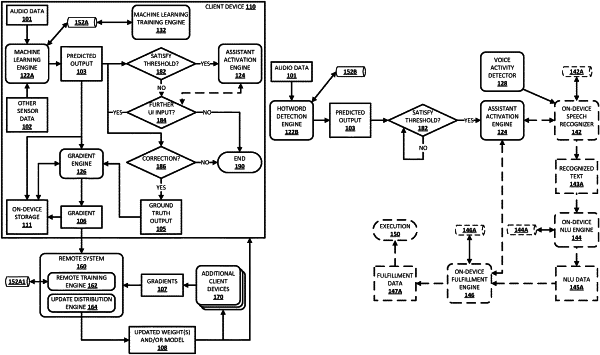| CPC G10L 15/197 (2013.01) [G06F 16/27 (2019.01); G06N 5/043 (2013.01); G06N 20/00 (2019.01); G10L 15/22 (2013.01); G10L 15/1815 (2013.01); G10L 2015/088 (2013.01); G10L 2015/223 (2013.01)] | 20 Claims |

|
1. A method implemented by one or more processors, the method comprising:
executing a first instance of an automated assistant in an inactive state at least in part on a first computing device operated by a user;
while in the inactive state, receiving, via one or more microphones of the first computing device, audio data that captures a spoken utterance of the user;
processing the audio data using a machine learning model to generate a predicted output that indicates a probability of one or more hotwords being present in the audio data;
determining that the predicted output satisfies a threshold that is indicative of the one or more hotwords being present in the audio data;
in response to determining that the predicted output satisfies the threshold, performing arbitration with at least one other computing device that is executing at least in part at least one other instance of the automated assistant; and
in response to performing arbitration with the at least one other computing device:
selecting user data for synchronization based on respective capabilities of each of the first computing device and the at least one other computing device; and
initiating bidirectional synchronization of the user data between the first instance of the automated assistant on the first computing device and the at least one other instance of the automated assistant on the at least one other computing device, wherein the bidirectional synchronization occurs at the first computing device and the at least one other computing device, the user data comprising data that is based on one or more interactions with the user at the first computing device, the one or more interactions occurring prior to the receiving of the audio data.
|